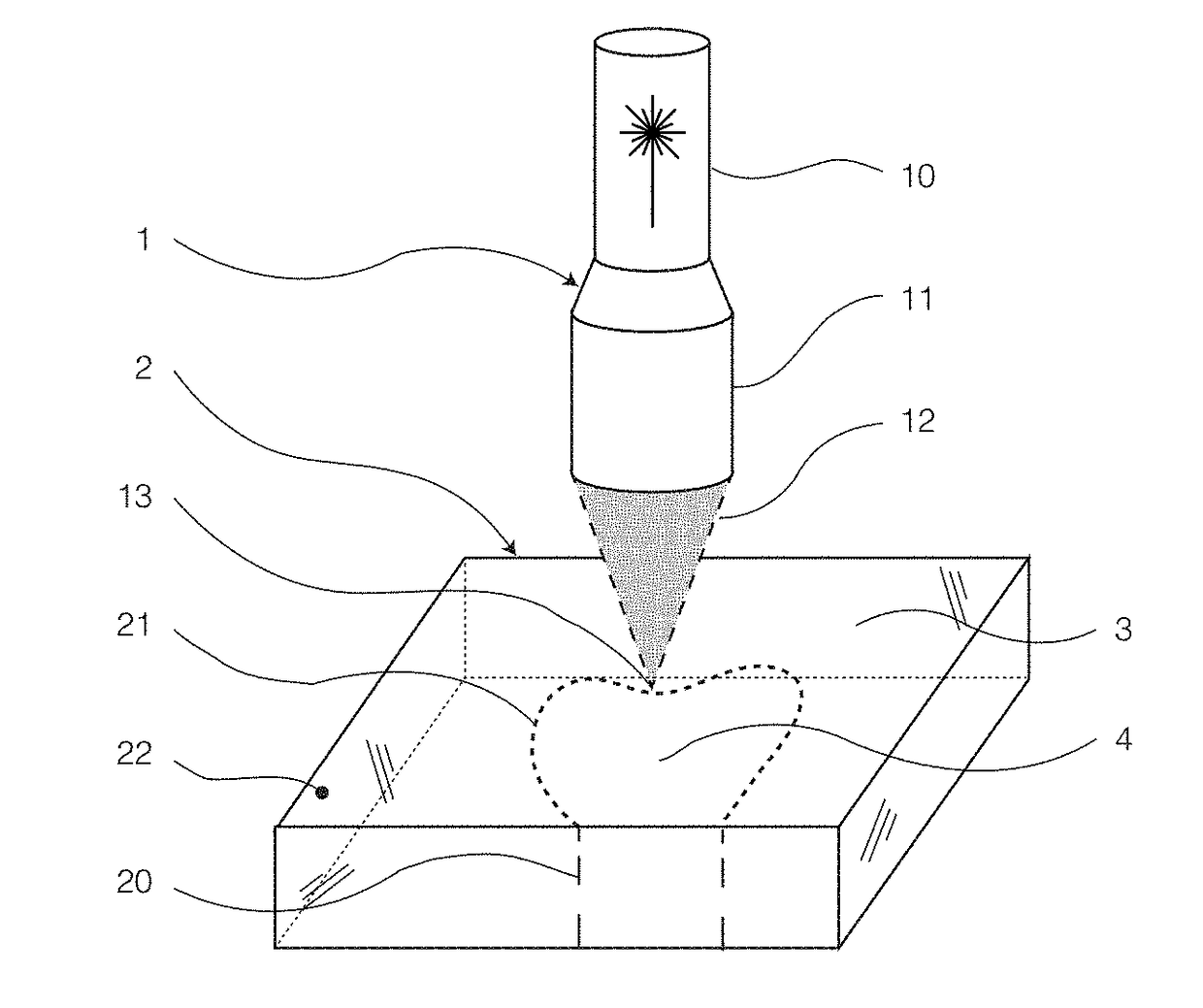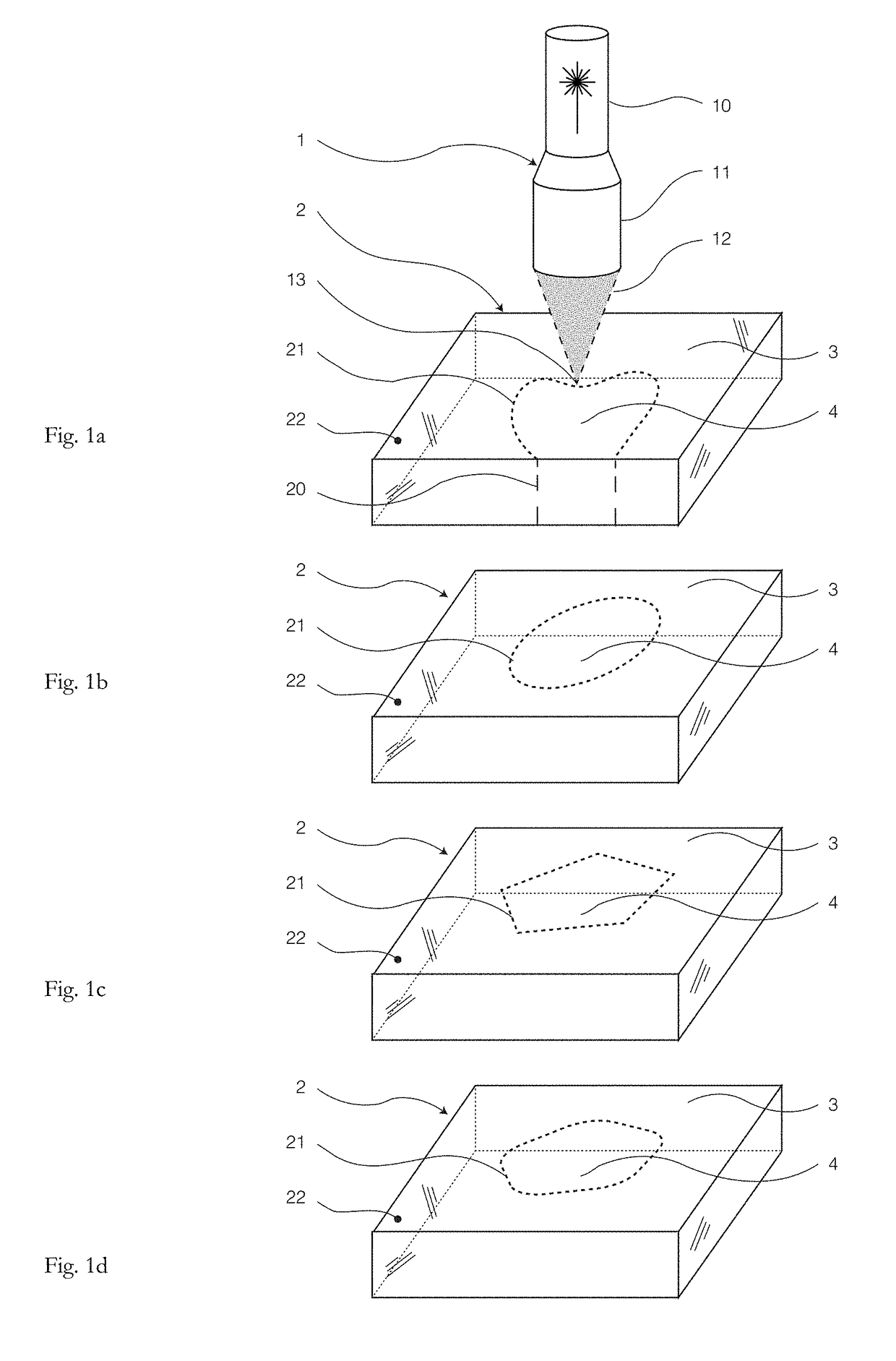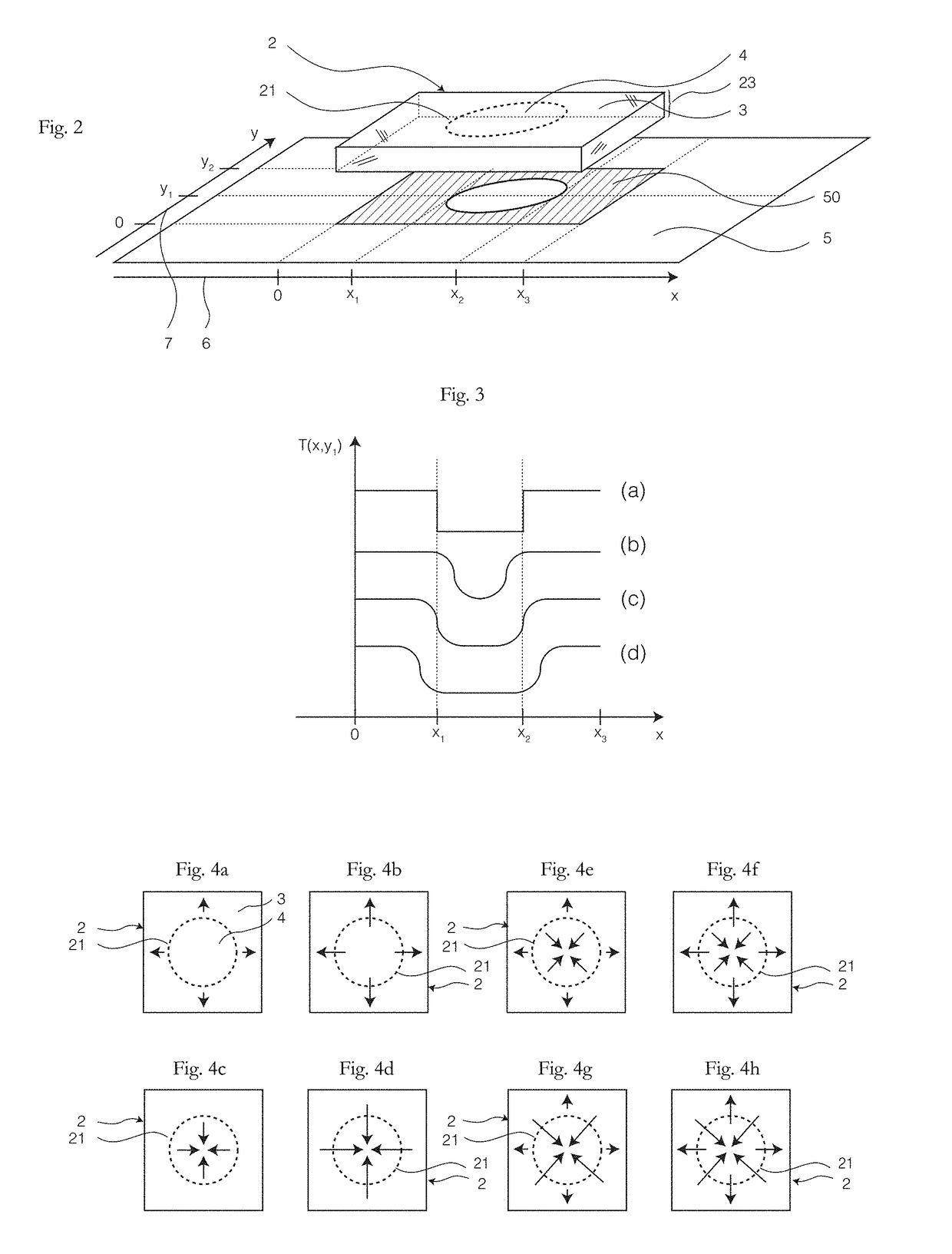Method and device for laser-assisted separation of a portion from a sheet glass element
a technology of sheet glass and laser assisted separation, which is applied in the direction of glass making apparatus, manufacturing tools, welding/soldering/cutting articles, etc., can solve the problems of affecting the quality of glass, so as to achieve efficient and clean separation
- Summary
- Abstract
- Description
- Claims
- Application Information
AI Technical Summary
Benefits of technology
Problems solved by technology
Method used
Image
Examples
Embodiment Construction
[0103]FIGS. 1a through 1d schematically shows a laser processing device 1, which can be used for microperforating a glass element 2 by introducing filamentary damages 20 along a defined separation line 21 and thus preparing it for subsequent separation.
[0104]Laser processing device 1 comprises an ultrashort pulse laser 10 for directing laser pulses 12 onto the glass element 2. For this purpose, the laser pulses 12 are focused onto the glass element 2 using focusing means 11. The wavelength of the ultrashort pulse laser 10 is selected so that the laser pulses 12 can penetrate into the glass element 2.
[0105]The laser pulses 12 generate a plasma in the volume of the glass element 2 causing the filamentary damages 20. The incidence points 13 of the laser pulses 12 on the glass element 2 are successively displaced over the surface 22 along the defined separation line 21.
[0106]Separation line 21 is defined so that it completely divides the glass element 2 into a portion 4 to be separated ...
PUM
| Property | Measurement | Unit |
|---|---|---|
| thickness | aaaaa | aaaaa |
| temperature | aaaaa | aaaaa |
| thickness | aaaaa | aaaaa |
Abstract
Description
Claims
Application Information
 Login to View More
Login to View More - Generate Ideas
- Intellectual Property
- Life Sciences
- Materials
- Tech Scout
- Unparalleled Data Quality
- Higher Quality Content
- 60% Fewer Hallucinations
Browse by: Latest US Patents, China's latest patents, Technical Efficacy Thesaurus, Application Domain, Technology Topic, Popular Technical Reports.
© 2025 PatSnap. All rights reserved.Legal|Privacy policy|Modern Slavery Act Transparency Statement|Sitemap|About US| Contact US: help@patsnap.com



